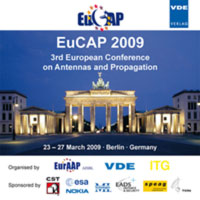Review of tropospheric, ionospheric and multipath data and models for Global Navigation Satellite Systems
Conference: EuCAP 2009 - 3rd European Conference on Antennas and Propagation
03/23/2009 - 03/27/2009 at Berlin, Germany
Proceedings: EuCAP 2009
Pages: 6Language: englishTyp: PDF
Personal VDE Members are entitled to a 10% discount on this title
Authors:
Martellucci, Antonio; Cerdeira, Roberto Prieto (European Space Agency, ESTEC, TEC-EEP, Keplerlaan 1, PB 299, 2200 AG Noordwijk, The Netherlands)
Abstract:
The implementation of the European Galileo navigation system and the design of its future evolution require a proper modelling of the effects introduced by the atmosphere (tropospheric and ionospheric) and by multipath from the environment surrounding the navigation receiver. All those effects combine to reduce the performance (accuracy, integrity, availability and continuity) of the navigation system and they have to be proper accounted into the design and the operation of the system. Those impairments may also impact system performance by affecting ground segment operations such as sensor station measurements or satcom data networks. Examples of their application in GNSS related activities range from design of the system and performance assessment by means of system simulators, definition of the proper receiver correction algorithms according to their application and utilization, design of mitigation algorithms, characterization of the ground segment monitoring stations, in-orbit validation and performance monitoring; and the development of satellite-based and regional augmentation systems. The paper presents a review of the input data and models for the tropospheric path delay, the ionospheric delay and scintillations and multipath effects for different environments (sensor stations, pedestrian, land mobile, aeronautical and indoor). The propagation issues related to the development of GNSS system at C band will also be discussed.


